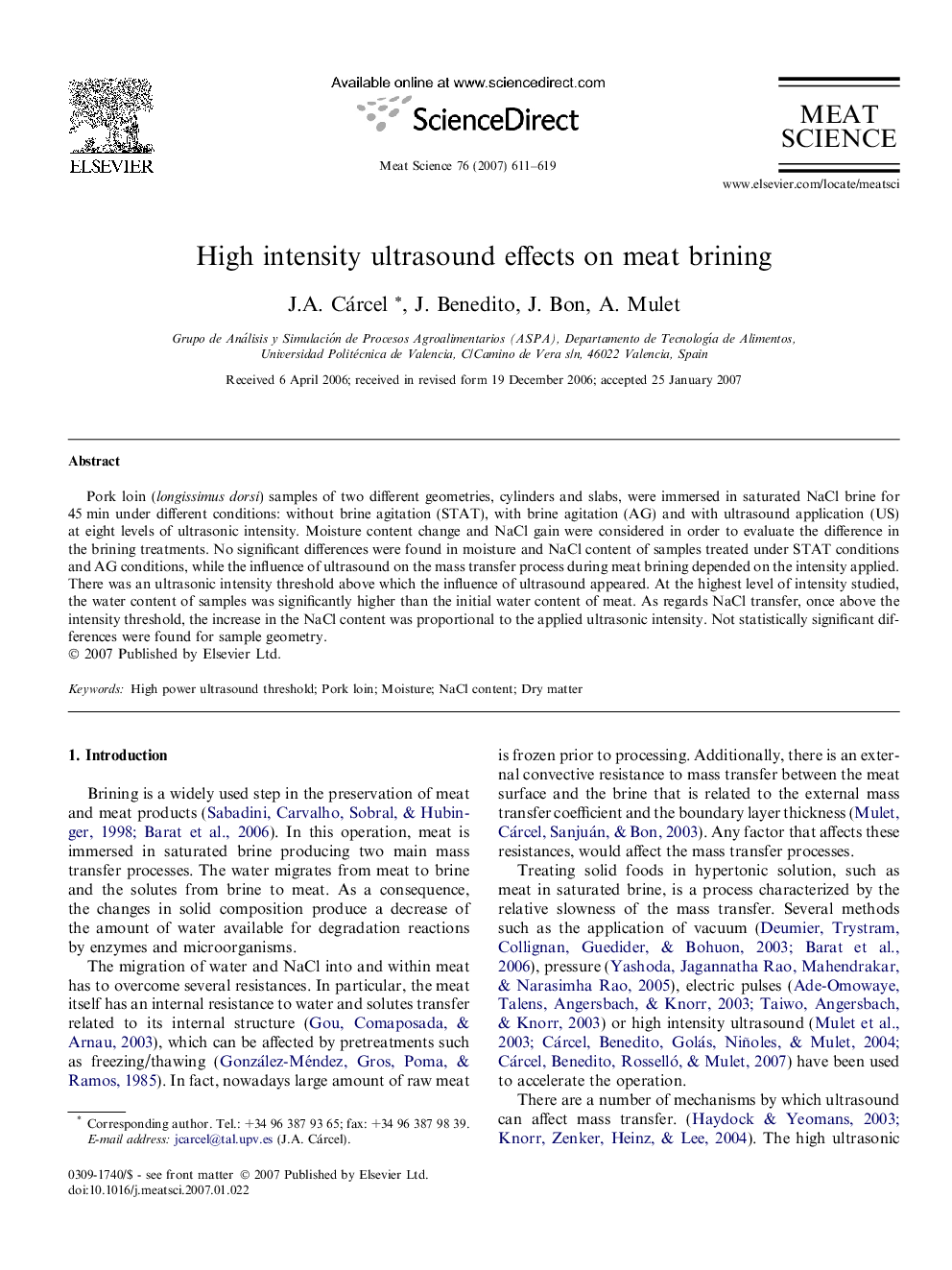| Article ID | Journal | Published Year | Pages | File Type |
|---|---|---|---|---|
| 2451903 | Meat Science | 2007 | 9 Pages |
Pork loin (longissimus dorsi) samples of two different geometries, cylinders and slabs, were immersed in saturated NaCl brine for 45 min under different conditions: without brine agitation (STAT), with brine agitation (AG) and with ultrasound application (US) at eight levels of ultrasonic intensity. Moisture content change and NaCl gain were considered in order to evaluate the difference in the brining treatments. No significant differences were found in moisture and NaCl content of samples treated under STAT conditions and AG conditions, while the influence of ultrasound on the mass transfer process during meat brining depended on the intensity applied. There was an ultrasonic intensity threshold above which the influence of ultrasound appeared. At the highest level of intensity studied, the water content of samples was significantly higher than the initial water content of meat. As regards NaCl transfer, once above the intensity threshold, the increase in the NaCl content was proportional to the applied ultrasonic intensity. Not statistically significant differences were found for sample geometry.
